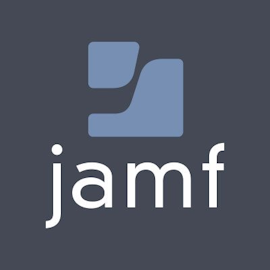17 years helping Singaporean businesses
choose better software
Uptycs
What Is Uptycs?
The Uptycs unified CNAPP and XDR platform helps businesses looking to enhance their cybersecurity across cloud and on-prem environments. One solution provides you with asset inventory, audit, compliance, vulnerability scanning, and threat detection and response. Eliminate tool, team, and infrastructure silos to reduce response times to breaches and attacks. Uptycs helps you make better risk decisions about vulnerabilities and threats. Shift your cybersecurity up with Uptycs.
Who Uses Uptycs?
Uptycs helps businesses of all sizes looking to enhance their cybersecurity with a unified solution to automate security, connect insights, tie together threat activity and reduce response times.
Not sure about Uptycs?
Compare with a popular alternative

Uptycs
Reviews of Uptycs
Alternatives Considered:
An incredibly useful tool in our arsenal
Comments: We've been a happy customer of Uptycs for years now. They have been super supportive of our deployment and have continued to add and improve features.
Pros:
The breadth of their tool's features is wonderful. We also love having so much visibility into our endpoints without much work.
Cons:
The breadth of features is wonderful but can be overwhelming. It may be better if they created a delineation of endpoint vs cloud features.
Alternatives Considered:
Uptycs is a powerful up and coming EDR
Comments: Uptycs helps us meet SOC 2 and ISO requirements. Implementing Uptycs across a fully remote workforce was a breeze and we've always had a great partnership with Uptycs.
Pros:
Lightweight on the systems, none of my devs complain about processor cycles. Continuous improvement of the product with new detections, new features, and fixes for bugs almost weekly. Low cost puts it in range of even smaller organizations.
Cons:
Not super friendly for very junior analysts, you'll need to really understand what is happening on a machine to get the full value. Some detections could use better corresponding data for investigation.
Alternatives Considered:
Uptycs is still your best choice for managed osquery
Comments: Provides most of what the osquery open source solution offers (sans extensions). It, removes a lot of the burdens managing all of the assets. There are a LOT of gotchas however, and the GUI is awful.
Pros:
Cloud based service that manages asset deployment and allows for cross-asset queries.
Cons:
Documentation is largely taken from the open source osquery where they forked from. Unfortunately, the docs were never really fleshed out well. This gets worse because the Uptycs fork doesn't merge back with the open source osquery, and because the uptycs docs are behind a login portal, doing any kind of search engine query results in answers that may not apply.Support doesn't seem to know their own product that well (possibly because of the point I made above).
Alternatives Considered:
Uptycs provides greater business impact
Pros:
We love the support from the Uptycs team and OSQuery-based rules are easier to tune and customize resulting in richer results for greater business impact.
Cons:
No cons. Our experience with Uptycs has been outstanding.
Alternatives Considered:
Actionable runtime threat and vulnerability insights and threat hunting capability
Comments: Actionable runtime threat and vulnerability insights and threat hunting capability
Pros:
The structured threat intelligence layered on top of system query interfaces (osquery, kubequery, and cloudquery). I also like the vulnerability detection on workstation operating systems and software.
Cons:
For the osquery based solution, it would be great to be able to readily control the permissions the agent has on the endpoints.
Endpoint insights
Comments: Reliable
Pros:
“A lot of vendors collect data from the endpoints butdon’t provide access to run queries on it which limitsour ability to manage our fleet. Uptycs gives us accessto all the data so we can write our own queries andanswer questions that arise.”
Cons:
Uptycs is a solid platform with great customer support.

























